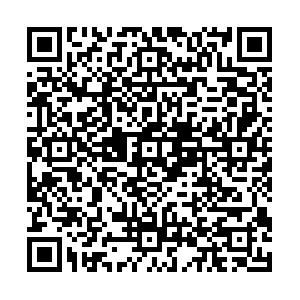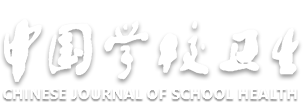Association between age of life adversity and insulin resistance in girls with precocious puberty
-
摘要:
目的 探讨性早熟女童中早期成长逆境(ELA)与胰岛素抵抗指标甘油三酯-葡萄糖指数(TyG)的关联,为后续开展有效预防和干预措施提供科学依据。 方法 于2020年7月至2021年9月,在安徽省儿童医院儿童保健门诊招募性早熟女童,纳入有完整血液指标和问卷信息的性早熟女童150名。采用父母评估和儿童自我报告结合共同评估儿童早期成长逆境暴露情况,采集空腹血样评估TyG。根据ELA得分分类为0,1,≥2共3组,采用多元线性回归模型探索累积早期成长逆境与性早熟女童TyG指数的关联。 结果 性早熟女童主观报告的早期成长逆境暴露率高,ELA平均得分为(1.07±1.17)分,TyG平均水平为(7.99±0.49)。单一逆境关联发现,性早熟女童暴露于缺乏温暖抚育与TyG指数呈正相关(β=0.26,95%CI=0.03~0.50,P<0.05)。累积逆境关联发现,在未调整混杂因素前,与未经历早期成长逆境的女童相比,ELA≥2组的女童TyG水平增加(β=0.24,95%CI=0.04~0.43);控制儿童年龄、母亲年龄、父亲年龄、体力活动、视屏时间、出生体重、出生方式(包括顺产和剖宫产)、自感压力,BMI标准化Z分和父母评估SDQ得分等协变量后,该关联仍有统计学意义(β=0.25,95%CI=0.04~0.46)(P值均<0.05),且独立于BMI。 结论 性早熟女童的累积早期成长逆境与胰岛素抵抗指标TyG指数呈正相关。应尽早识别暴露于高ELA的性早熟女童,及时干预以改善其糖代谢功能。 Abstract:Objective To investigate the association between early life adversity(ELA) and the triglyceride-glucose (TyG) index for an indicator of insulin resistance among girls with precocious puberty, so as to provide scientific basis for effective prevention and intervention measures. Methods From July 2020 to September 2021, girls with precocious puberty were recruited from the children's health clinic of Anhui Provincial Children's Hospital. Among them, 150 girls with complete blood indicators and questionnaire information were included. Both parental reports and child self-reports were combined to assess ELA exposure. Fasting blood samples were collected to evaluate thetyg index. According to the ELA score classification, girls were classified into 3 groups for 0, 1 and >2, multiple linear regression analysis were conducted to examine the association between ELA exposure and TyG index in girls with precocious puberty. Results Precocious pubertal girls subjectively reported high rates of ELA exposure, with an average ELA score of (1.07±1.17) and an average TyG level of (7.99±0.49). A single adverse association was found that the exposure of girls with precocious puberty to a lack of warm nurturing was significantly positively correlated with the TyG index (β=0.26, 95%CI=0.03-0.50, P<0.05). Multiple linear regression analysis showed that girls in the ELA≥2 group had a 0.24 increase in TyG levels compared to girls who did not experience ELA (β=0.24, 95%CI=0.04-0.43). After controlling for covariates such as child age, mother's age, father's age, physical activity, screen time, birth weight, birth method (including natural and cesarean sections), perceived stress, BMI standardized Z-score, and parental assessment SDQ score, The association remained significant after controlling for covariates and was independent of BMI (β=0.25, 95%CI=0.04-0.46)(P<0.05). Conclusions Cumulative early life adversity in girls with precocious puberty is significantly positively correlated with the TyG index. It should early identify the girls exposed to high ELA for precocious puberty and timely intervent to improve their glucose metabolism function. -
Key words:
- Puberty, precocious /
- Life change events /
- Insulin resistance /
- Growth and development /
- Regression analysis /
- Child /
- Female
1) 利益冲突声明 所有作者声明无利益冲突。 -
表 1 未暴露组与暴露组女童TyG指数在单一早期成长逆境分组中的分布及零阶相关(x ±s)
Table 1. The distribution and zero correlation of TyG index of girls in unexposed group and exposed group in single early growth adversity group(x ±s)
变量 未暴露组 暴露组 r值 人数 x±s 人数 x±s 父母学历低 26 7.98±0.51 124 8.03±0.47 0.03 家庭收入低 29 7.98±0.51 121 8.04±0.45 0.05 父母离婚 11 7.98±0.49 139 8.14±0.59 0.09 父母打架 18 7.98±0.51 132 8.07±0.40 0.06 严厉体罚 17 7.99±0.50 133 8.01±0.44 0.01 忽视 7 7.98±0.50 143 8.11±0.46 0.05 同伴欺凌 31 7.97±0.50 119 8.10±0.49 0.11 缺乏温暖抚育 21 7.96±0.48 129 8.21±0.53 0.18* 注:*P<0.05。 表 2 单一早期成长逆境与TyG指数多元线性回归分析(n=150)
Table 2. Multiple linear regression analysis of a single early growth adversity with a TyG index(n=150)
自变量 β值(23395%CI) P值 父母学历低 0.14(-0.09~0.36) 0.23 家庭收入低 0.09(-0.12~0.31) 0.39 父母离婚 0.14(-0.17~0.46) 0.36 父母打架 0.07(-0.20~0.34) 0.62 严厉体罚 0.01(-0.26~0.28) 0.93 忽视 0.12(-0.28~0.51) 0.56 同伴欺凌 0.10(-0.12~0.31) 0.37 缺乏温暖抚育 0.26(0.03~0.50) 0.03 注:自变量缺乏温暖抚育以否为参照;多元线性回归分析调整了儿童年龄、父母年龄、体力活动、视屏时间、出生体重、出生方式、自感压力、BMI Z分和SDQ得分。 -
[1] LIN L, WANG H H, LU C, et al. Adverse childhood experiences and subsequent chronic diseases among middle-aged or older adults in China and associations with demographic and socioeconomic characteristics[J]. JAMA Netw Open, 2021, 4(10): e2130143. doi: 10.1001/jamanetworkopen.2021.30143 [2] WAN Y, CHEN R, MA S, et al. Associations of adverse childhood experiences and social support with self-injurious behaviour and suicidality in adolescents[J]. Br J Psychiatry, 2019, 214(3): 146-152. doi: 10.1192/bjp.2018.263 [3] FELITTI V J, ANDA R F, NORDENBERG D, et al. Relationship of childhood abuse and household dysfunction to many of the leading causes of death in adults. The Adverse Childhood Experiences (ACE) Study[J]. Am J Prev Med, 1998, 14(4): 245-258. doi: 10.1016/S0749-3797(98)00017-8 [4] KOROTANA L M, DOBSON K S, PUSCH D, et al. A review of primary care interventions toimprove health outcomes in adult survivors of adverse childhood experiences[J]. Clin Psychol Rev, 2016, 46: 59-90. doi: 10.1016/j.cpr.2016.04.007 [5] KENRICK D T, GRISKEVICIUS V, NEUBERG S L, et al. Renovating the pyramid of needs: contemporary extensions built upon ancient foundations[J]. Perspect Psychol Sci, 2010, 5(3): 292-314. doi: 10.1177/1745691610369469 [6] CSATHÓ Á, BIRKÁS B. Early-life stressors, personality development, and fast lifestrategies: an evolutionary perspective on malevolent personality features[J]. Front Psychol, 2018, 9: 305. doi: 10.3389/fpsyg.2018.00305 [7] BAPTISTA A, CHAMBON V, HOERTEL N, et al. Associations between early life adversity, reproduction-oriented life strategy, and borderline personality disorder[J]. JAMA Psychiatry, 2023, 80(6): 558-566. doi: 10.1001/jamapsychiatry.2023.0694 [8] HUGHES K, BELLIS M A, HARDCASTLE K A, et al. The effect of multiple adverse childhood experiences on health: a systematic review and Meta-analysis[J]. Lancet Public Health, 2017, 2(8): e356-e366. doi: 10.1016/S2468-2667(17)30118-4 [9] MCCURLEY J L, MILLS P J, ROESCH S C, et al. Chronic stress, inflammation, and glucose regulation in U.S. Hispanics from the HCHS/SOL sociocultural ancillary study[J]. Psychophysiology, 2015, 52(8): 1071-1079. doi: 10.1111/psyp.12430 [10] BATRA A, CHEN L M, WANG Z, et al. Early life adversity and polygenic risk for high fasting insulin are associated with childhood impulsivity[J]. Front Neurosci, 2021, 15: 704785. doi: 10.3389/fnins.2021.704785 [11] ELSENBURG L K, BENGTSSON J, RIECKMANN A, et al. Childhood adversity and risk of type 2 diabetes in early adulthood: results from a population-wide cohort study of 1.2 million individuals[J]. Diabetologia, 2023, 66(7): 1218-1222. doi: 10.1007/s00125-023-05911-w [12] THOMAS C, HYPPÖNEN E, POWER C. Obesity and type 2 diabetes risk in midadult life: the role of childhood adversity[J]. Pediatrics, 2008, 121(5): e1240-e1249. doi: 10.1542/peds.2007-2403 [13] PUOLAKKA E, PAHKALA K, LAITINEN T T, et al. Childhood socioeconomic status in predicting metabolic syndrome and glucose abnormalities in adulthood: the cardiovascular risk in young finns study[J]. Diabetes Care, 2016, 39(12): 2311-2317. doi: 10.2337/dc16-1565 [14] RUTTERS F, PILZ S, KOOPMAN A D, et al. Stressful life events and incident metabolic syndrome: the Hoorn study[J]. Stress, 2015, 18(5): 507-513. doi: 10.3109/10253890.2015.1064891 [15] FULLER-ROWELL T E, HOMANDBERG L K, CURTIS D S, et al. Disparities in insulin resistance between black and white adults in the United States: the role of lifespan stress exposure[J]. Psychoneuroendocrinology, 2019, 107: 1-8. [16] 苏青, 臧丽. 胰岛素抵抗的历史、机制和管理[J]. 中华糖尿病杂志, 2023, 15(1): 6-13.SU Q, ZANG L. Insulin resistance: history, mechanisms and management[J]. Chin J Diabetes Mellitus, 2023, 15(1): 6-13. (in Chinese) [17] CHE B, ZHONG C, ZHANG R, et al. Triglyceride-glucose index and triglyceride to high-density lipoprotein cholesterol ratio as potential cardiovascular disease risk factors: an analysis of UK biobank data[J]. Cardiovasc Diabetol, 2023, 22(1): 34. doi: 10.1186/s12933-023-01762-2 [18] 乔晶, 刘乙君, 王彦. 甘油三酯-葡萄糖指数与胰岛素抵抗相关代谢性疾病的关系[J]. 国际内分泌代谢杂志, 2022, 42(3): 223-226.QIAO J, LIU Y J, WANG Y. Relationship between triglyceride-glucose index and insulin resistance-related metabolic diseases[J]. Int J Endocrinol Metabol, 2022, 42(3): 223-226. (in Chinese) [19] GUERRERO-ROMERO F, SIMENTAL-MENDÍA L E, GONZÁLEZ-ORTIZ M, et al. The product of triglycerides and glucose, a simple measure of insulin sensitivity comparison with the euglycemic-hyperinsulinemic clamp[J]. J Clin Endocrinol Metab, 2010, 95(7): 3347-3351. doi: 10.1210/jc.2010-0288 [20] GIANNINI C, SANTORO N, CAPRIO S, et al. The triglyceride-to-HDL cholesterol ratio: association with insulin resistance in obese youths of different ethnic backgrounds[J]. Diabetes Care, 2011, 34(8): 1869-1874. doi: 10.2337/dc10-2234 [21] 邵君, 孙毅, 尹小俭, 等. 中国日本儿童青少年体质量指数与体能指数的关系[J]. 中国学校卫生, 2019, 40(11): 1616-1619. doi: 10.16835/j.cnki.1000-9817.2019.11.005SHAO J, SUN Y, YlN X J, et al. Association between body mass index and physical fitness index in Chinese and Japanese children and adolescents[J]. Chin J Sch Health, 2019, 40(11): 1616-1619. (in Chinese) doi: 10.16835/j.cnki.1000-9817.2019.11.005 [22] BERNSTEIN D P, STEIN J A, NEWCOMB M D, et al. Development and validation of a brief screening version of the Childhood Trauma Questionnaire[J]. Child Abuse Negl, 2003, 27(2): 169-190. doi: 10.1016/S0145-2134(02)00541-0 [23] RAUDINO A, WOODWARD L J, FERGUSSON D M, et al. Childhood conduct problems are associated with increased partnership and parenting difficulties in adulthood[J]. J Abnorm Child Psychol, 2012, 40(2): 251-263. doi: 10.1007/s10802-011-9565-8 [24] 寇建华, 杜亚松, 夏黎明. 儿童长处和困难问卷(父母版)上海常模的信度和效度[J]. 上海精神医学, 2005, 17(1): 26-29. https://www.cnki.com.cn/Article/CJFDTOTAL-JSYI200501006.htmKOU J H, DU Y S, XIA L M. Reliabity and vaidity of Children's Strengths and Dificulties Questionnaire in Shanghai normal[J]. Shanghai Arch Psvchiatry, 2005, 17(1): 26-29. (in Chinese) https://www.cnki.com.cn/Article/CJFDTOTAL-JSYI200501006.htm [25] LYNCH L, WAITE R, DAVEY M P. Adverse childhood experiences and diabetes in adulthood: support for a collaborative approach to primary care[J]. Contemp Fam Ther, 2013, 35(4): 639-655. doi: 10.1007/s10591-013-9262-6 [26] TOSATO S, BONETTO C, LOPIZZO N, et al. Childhood and adulthood severe stressful experiences and biomarkers related to glucose metabolism: a possible association?[J]. Front Psychiatry, 2021, 12: 629137. doi: 10.3389/fpsyt.2021.629137 [27] LI L, GARVEY W T, GOWER B A. Childhood maltreatment is an independent risk factor for prediabetic disturbances in glucose regulation[J]. Front Endocrinol (Lausanne), 2017, 8: 151. doi: 10.3389/fendo.2017.00151 [28] BELLIS M A, HUGHES K, LECKENBY N, et al. Measuring mortality and the burden of adult disease associated with adverse childhood experiences in England: a national survey[J]. J Public Health, 2015(3): 445-454. [29] ALMUNEEF M, QAYAD M, ALEISSA M, et al. Adverse childhood experiences, chronic diseases, and risky health behaviors in Saudi Arabian adults: a pilot study[J]. Child Abuse Negl, 2014, 38(11): 1787-1793. doi: 10.1016/j.chiabu.2014.06.003 [30] SCOTT K M, VON KORFF M, ANGERMEYER M C, et al. Association of childhood adversities and early-onset mental disorders with adult-onset chronic physical conditions[J]. Arch General Psychiatry, 2011, 68(8): 838-844. doi: 10.1001/archgenpsychiatry.2011.77 [31] DE GUIA R M, ROSE A J, HERZIG S. Glucocorticoid hormones and energy homeostasis[J]. Horm Mol Biol Clin Invest, 2014, 19(2): 117-128. [32] SEAL S V, TURNER J D. The 'Jekyll and Hyde' of gluconeogenesis: early life adversity, later life stress, and metabolic disturbances[J]. Int J Mol Sci, 2021, 22(7): 3344. doi: 10.3390/ijms22073344 [33] FLOURI E, FRANCESCONI M, MIDOUHAS E, et al. Prenatal and childhood adversity and inflammation in children: a population-based longitudinal study[J]. Brain Behav Immun, 2020, 87: 524-530. doi: 10.1016/j.bbi.2020.01.024 [34] KOKOSI T, FLOURI E, MIDOUHAS E. Do upsetting life events explain the relationship between low socioeconomic status and systemic inflammation in childhood? Results from a longitudinal study[J]. Brain Behav Immun, 2020, 84: 90-96. doi: 10.1016/j.bbi.2019.11.013 [35] FACCHI J C, LIMA T A L, OLIVEIRA L R, et al. Perinatal programming of metabolic diseases: the role of glucocorticoids[J]. Metabolism, 2020, 104: 154047. doi: 10.1016/j.metabol.2019.154047 [36] ZANNAS A S, GORDON J L, HINDERLITER A L, et al. IL-6 response to psychosocial stress predicts 12-month changes in cardiometabolic biomarkers in perimenopausal women[J]. J Clin Endocrinol Metab, 2020, 105(10): e3757-e3765. doi: 10.1210/clinem/dgaa476 [37] WICKRAMA K A S, BAE D, O'NEAL C W. Explaining the association between early adversity and young adults' diabetes outcomes: physiological, psychological, and behavioral mechanisms[J]. J Youth Adolesc, 2017, 46(12): 2407-2420. doi: 10.1007/s10964-017-0639-y [38] MENDLE J, RYAN R M, MCKONE K M P. Age at menarche, depression, and antisocial behavior in adulthood[J]. Pediatrics, 2018, 141(1): e20171703. doi: 10.1542/peds.2017-1703 [39] DEARDORFF J, MARCEAU K, JOHNSON M, et al. Girls' pubertal timing and tempo and mental health: a longitudinal examination in an ethnically diverse sample[J]. J Adolesc Health, 2021, 68(6): 1197-1203. doi: 10.1016/j.jadohealth.2021.01.020 [40] CHEN C, CHEN Y, ZHANG Y, et al. Association between dietary patterns and precocious puberty in children: a population-based study[J]. Int J Endocrinol, 2018, 2018: 4528704. [41] HUANG H, YAN P, SHAN Z, et al. Adverse childhood experiences and risk of type 2 diabetes: a systematic review and Meta-analysis[J]. Metabolism, 2015, 64(11): 1408-1418. doi: 10.1016/j.metabol.2015.08.019 [42] ZHU S, SHAN S, LIU W, et al. Adverse childhood experiences and risk of diabetes: a systematic review and Meta-analysis[J]. J Glob Health, 2022, 12: 04082. doi: 10.7189/jogh.12.04082 [43] GARNER A S, SHONKOFF J P, Committee on Psychosocial Aspects of Child and Family Health, et al. Early childhood adversity, toxic stress, and the role of the pediatrician: translating developmental science into lifelong health[J]. Pediatrics, 2012, 129(1): e224-e231. doi: 10.1542/peds.2011-2662 [44] LI J, YU Y, YUAN J, et al. Association between early life adversity and allostatic load in girls with precocious puberty[J]. Psychoneuroendocrinology, 2023, 152: 106101. doi: 10.1016/j.psyneuen.2023.106101 [45] SIMENTAL-MENDÍA L E, RODRÍGUEZ-MORÁN M, GUERRERO-ROMERO F. The product of fasting glucose and triglycerides as surrogate for identifying insulin resistance in apparently healthy subjects[J]. Metab Syndr Relat Disord, 2008, 6(4): 299-304. doi: 10.1089/met.2008.0034 -

 点击查看大图
点击查看大图
计量
- 文章访问数: 395
- HTML全文浏览量: 183
- PDF下载量: 21
- 被引次数: 0





 下载:
下载: